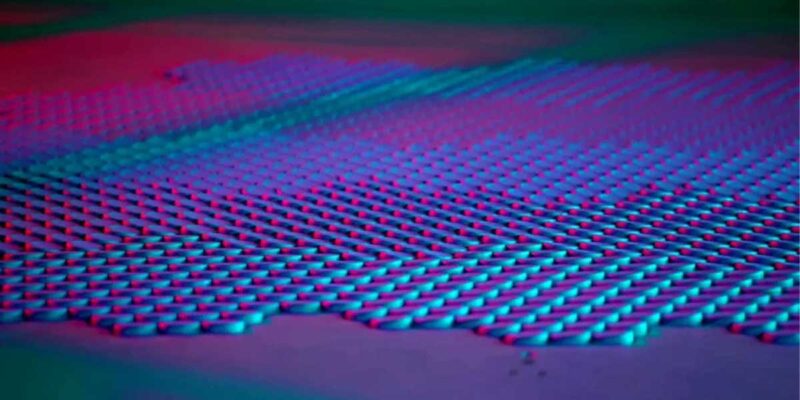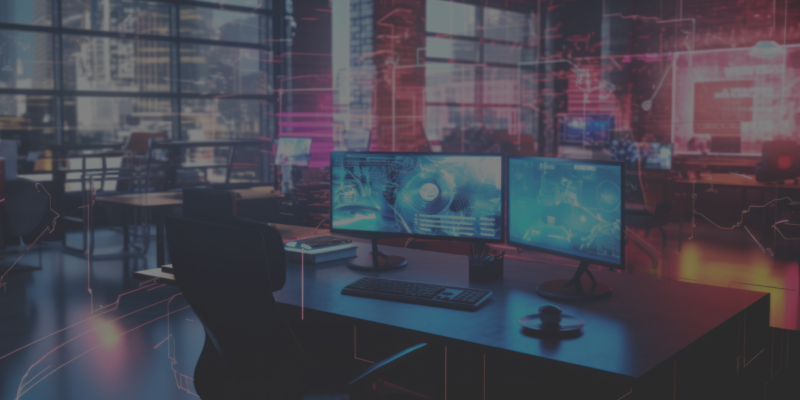Nine Tips to Bridge the Cybernetic Design Gap
Before you commit to incorporating augmented or virtual reality into your design process, consider these scenarios that could harm, rather than help, your final outcome.
Much like Doctor Who’s TARDIS, the toolbox for design just got a lot bigger on the inside. What was once relegated to testing labs, tinkerer’s garages, and a relatively small segment of the gaming industry has now exploded onto the landscape of everyday tech with the promise to change practice in everything from product design to education to entertainment to architectural design. Unlike other technologies we have seen, augmented and virtual reality are looking to have staying power in a truly disruptive way.
A quick primer on this technology and its current capabilities:
Augmented reality (AR) is a live, direct or indirect view of a physical, real-world environment whose elements are supplemented by computer-generated sensory input such as sound, video, graphics, or GPS data. The most recent successful AR example is a little game you may have heard of: Pokemón GO. Thanks to the app, millions of users were chasing virtual creatures around the actual globe using their smart phones. The app generated millions of dollars in sellable data for the game’s creator and launched AR technology into the mainstream.
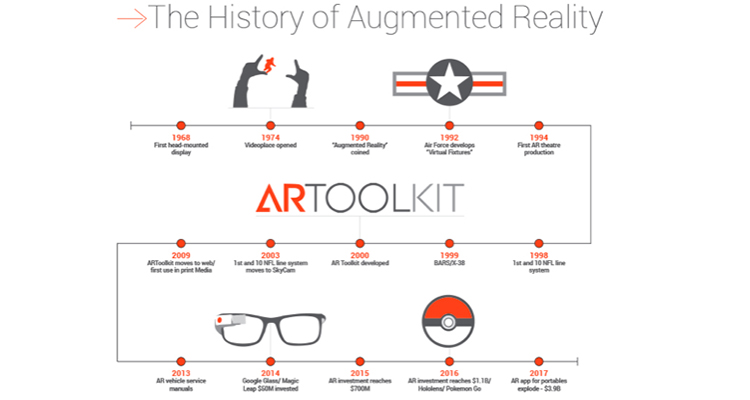
Virtual reality (VR), unlike augmented reality, currently relies on a head-mounted display (HMD) that blocks out all external visual and auditory stimulus and provides a computer-generated simulation of a three-dimensional image or environment with which users interact using special electronic equipment. Having the largest presence in gaming/entertainment, medical, and military applications, products such as the HTC Vive or Oculus Rift are providing immersive environments that transport the user into the intended scenario.
Both technologies have a long history dating back to the 1960s, and for much of their collective history, they were seen as clunky and expensive. Over the last several years however, investments from deep-pocketed sources coupled with advancements in computing power and the rise of smart devices, have gotten us much closer to the kind of technology we associate with legendary science fiction lore.
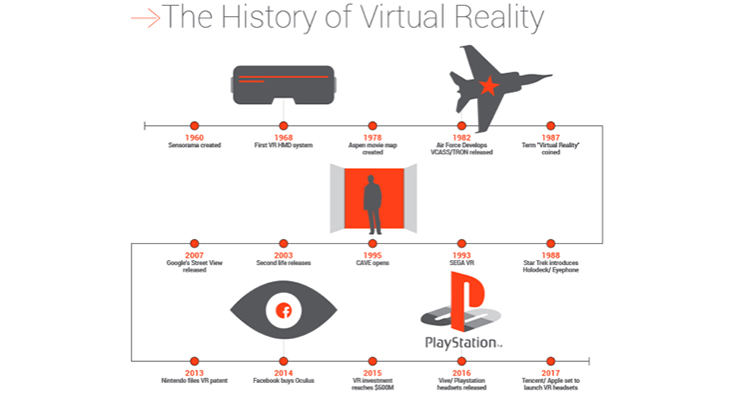
Designing with the Tech of the Future
As designers we have the opportunity to leverage this technology and delve more deeply into the design process in new ways. At DLR Group, we’re exploring how we can use this technology as an internal collaborative and iterative process in partnership with our clients, as a part of the product for the client in the form of a marketing/fundraising tool, or as an immersive way to experience the final environment.
There are a variety of ways to engage in AR/VR and a myriad of price points to go with it, each with advantages and drawbacks. Wading into this world can no doubt be a daunting task for any design team, but enticing possibilities for collaboration and new design techniques far outweigh the hesitancy. Below are some key considerations when deciding to launch an augmented or virtual reality design project:
1. Define Your Objectives
There are several key factors to consider outside of which technology you to use. In some ways the technology takes a back seat to the actual experience you’re working towards. As powerful as AR/VR technology is, the goal should always tie back to the core mission, brand, or business objective. This drives back to the most basic of questions: Why is using this type of platform necessary, and what do you expect of the outcomes?

2. Select the Technology
Once you’ve outlined your objectives, you should review the available technology to consider which one makes the most sense for your project. Does augmented or virtual reality make better sense? Are you using an existing technology you already have? Will it require custom software or off-the-shelf products to allow you to accomplish your goals? These considerations are critical to success as the outcomes may not translate between platforms; content developed for Oculus Rift will not translate to Google Cardboard.
It’s also crucial to understand the technology of any partner firms. Misunderstandings here can be akin to making a video call to someone using a rotary phone, as well as options for user control devices, which can range from gaming controllers, wands, gesture technology, or even thumb wheelsI It’s important to consider the user, the environments, and which control capabilities exist.
3. Try Before You Buy
First-time users are often awestruck when they initially experience new AR/VR technology. It’s exciting to try new things, but sometimes in their excitement, users lose their ability to deliver actionable contributions or feedback. It’s helpful to schedule training sessions with the team to acclimate everyone on how to best maximize your use of the technology. This could–and often should–include leveraging similar examples or test runs of the current project for your team to try out for themselves before any required constructive meeting.
4. Understand First-Person Design
Just as in the real world, in AR/VR, users see things from a different perspective. The iterative and interactive nature of AR/VR allows each user to contribute to the environment in their own unique way. This feature is exciting, but it is important to design the framework and boundaries for the environment, rather than have it be endless. If it’s too large, the team gets lost. If it’s too small, you could wind up virtually tripping over each other.
5. Separate the Good From the Bad
Investing in quality content will make the experience of designing in AR/VR much more effective, more dynamic, and more memorable. Know your comfort level with creating content, and find the right partner with the right experience to help fill any gaps. The teaming requirements should tie directly back to the original objectives, and how best to achieve them.
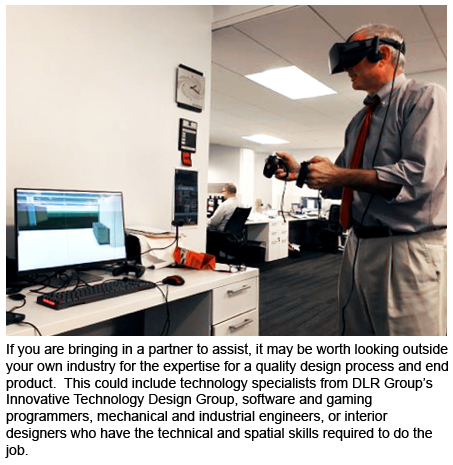
6. Mobile vs. Dedicated Environments
Incorporating a mobile platform for design use requires additional levels of consideration. Mobile app developers will tell you that some of the biggest challenges are creating apps for multiple platforms and multiple versions of operating systems, even on the exact same device. This complicates mobile AR/VR apps significantly, as there are essentially two layers to the app design. The first is the actual app design, which considers experience navigation and other out-of-experience control features such as settings. The second is the experience design itself, and how to navigate within the experience. Items such as breadcrumb threads and content libraries often have to be split between AR/VR modes and within the app itself. So the ability to develop or use the tools across both environments to leverage the experience in the design process is imperative.
7. Duration and Timing of Delivery
Setting realistic expectations for the development, setup, and delivery of the experience so users get the most out of the design process is crucial, particularly if you work on billable time. Even if you clearly define your objectives, select the right technology, and put the right people in place, you can’t completely absolve yourself of delays or complications. A timely approach will allow users to reap the unique, unmatched benefits this technology can produce.
Developing the necessary tools to achieve your goals can take an average of 12-to-16 weeks for simple scenarios, and as much as three-to-six months before design even begins. The good news is set-up can work in tandem with other initial developmental design processes, such as programming and schematic design, which often mimics the timeframe of AR/VR setup. There are also several shortcuts that can shorten the set-up time, including purchasing stock 3D video capture or computer-generated elements, purchasing pre-written modules of code or complete software add-ins such as Enscape for Revit.

8. Understand the Technology Will Evolve Faster Than Your Project
Thanks to large infusions of investment capital being pumped into the market, technology developers are spinning out new technology and software almost daily. This is exciting, but can make for an uneasy landscape. You and your team can chase the proverbial technology tail forever, trying to dazzle and incorporate what new thing just came out. Keep in mind that your main objective is to deliver an experience and a narrative rather than showcase the technology. The AR/VR landscape can be an incredibly powerful design and presentation tool, but it is not a cure-all for unwanted or inadequate design ideas. What it can do is provide solid dimensional collaboration and communication opportunities that present the material in a more intuitive way than 2D drawings or images on a screen.
9. The Environment for the Environment
The last consideration for using AR/VR in the design process is where you will be using this technology. Mobile applications have the least number of controlled environments and offer the most flexibility, but the output can be affected by the real world environment, e.g. sunlight glare, ambient noise, poor acoustics in the space. AR in a dedicated, enclosed, controllable environment requires special consideration to maximize the technology’s ability to display content. Depending on the sophistication of the technology, it may require fixed objects within the room to lock onto where the AR visual field sits.
The computing power required for many of these system is much greater than for standard applications. Poor or limited bandwidth will hamper the experience and can cause latency issues or crashes. The rule of thumb when working with this technology is that you should double the expected bandwidth required whenever possible.
Following these best practices can put your design project on a good path for success. I recommend starting off with unique aspects within a smaller project’s total design project so you can acclimate to the process, and get a feel for how it will be beneficial. Doing this on multiple projects will allow you to build your skills and improve your design portfolio across greater platforms. Happy designing!
This content is reprinted with permission from DLR Group.



